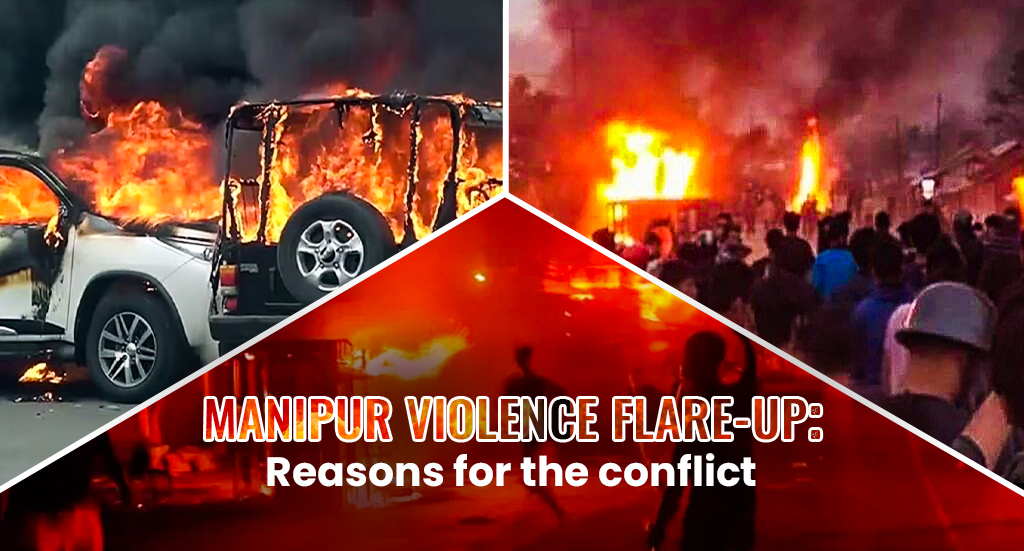Fresh violence broke-out in Manipur on May 28, resulting in two civilian deaths, which came even as chief minister Biren Singh said that 40 Kuki militants have been killed in the state so far. One person was killed in an encounter between police and insurgents, while the other was killed by militants.
Clashes broke out in the early hours of May 28 between rival ethnic militant groups and between militants and security forces at several places in different districts surrounding the Imphal Valley. The CM emphasised that the clashes were not between two communities but between militants and security forces.
He said the terrorists have been shooting at unarmed civilians, destroying property, and torching houses.
“The terrorists have been using M-16 and AK-47 assault rifles and sniper guns against civilians. They came to many villages to burn down homes. We have started taking very strong action against them with the help of the army and other security forces.”
“I won’t call them Kuki militants. They are Kuki terrorists. They have been shooting at unarmed civilians,” Biren Singh said.
Clashes broke out between militants and state police personnel in Napat, Serou and Sugnu in Kakching district after the former burnt down around 80 houses of the Meiti community, forcing villagers to flee their homes at midnight.
The violence has claimed more than 85 lives in Manipur so far. Heavily armed troops and paramilitary forces are deployed in the state, particularly in fragile areas.
An ethnic encounter flared up on May 3 between the Meitei groups, a majority that lives in the Imphal Valley, and the tribes mainly from the surrounding hills, including the Kukis.
The series of raging events that took place in May have led to an alarming situation in the northeastern state.
Although it has resulted in the migration of thousands of Kukis and Meiteis, the core reasons for the violence in Manipur are less about identity and religion and more about socio-economics, specifically the race for government perks, land, and forest resources. In both communities, the poorest and weakest members are suffering the most.
Real Cause of Fierce Rivalries
The major reason behind the massive turmoil in the state has been the ultimatum by the Meitei community- the majority Hindu ethnic group which accounts for around 53 per cent of Manipur’s population- to be included in the Scheduled Tribe list. The process is long and hasn’t begun yet, and it can be successful only once the Indian Constitution is amended.
Inter-communal conflict and disagreements over land and demographics have existed in Manipur for many years, leading to underlying rage and simmering tensions among the communities.
In simple terms, Meiteis want to be included in the ST status, opening doors to more government jobs and resources. However, Kukis, on the other hand, don’t want them to get it- the Meiteis are considered socially and politically privileged and economically better off than the other communities in the state. The Meiteis contend they need the ST status to “preserve” their community and “save the ancestral land, tradition, culture, and language.” They’re unable to buy land in the hills as the law does not allow it. They say ST status will remove the restriction on buying and selling land. The Naga and the Kuki groups, who inhabit Manipur’s hilly areas, fear they will be steadily evicted from their land if the Meiteis’ demands are met.
When the Manipur High Court ordered that the Meitei tribe be taken into consideration for inclusion on the ST list, the situation grew more difficult.
Many people from the southwestern Burma region and neighbouring parts of Bangladesh and India (Chin), who belong to the same ethnic group as Kukis’ have entered India to break free of violence and oppression. The Kukis tribe, who are related to the Chin, are agitated with the government’s alarming attitude towards these illegal immigrants.
The Northeast has historically received little attention by the government, media, and the country. With its disputes, tribes and rudimentary situations, it is India’s area of darkness.








